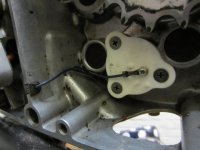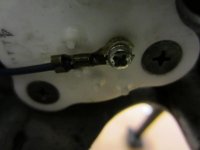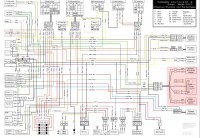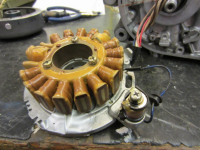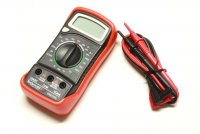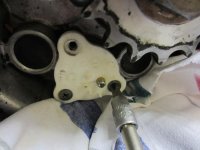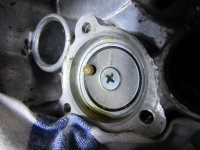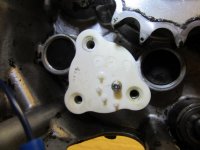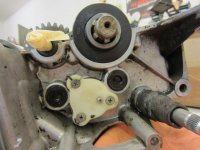hey forum!
i ´ve pretty much broke down my RD 250 this winter to replace the crank seals gaskets et cetera.
i´ve also replaced the old broken Neutral Switch.
Now i´m pretty much done and trying to get all the Electrics to work properly...figured blinkers,oil idiot light and now the neutral switch doesnt work....bike is in neutral....generator cable connected....no light in the idiot panel.
the bulb is working (hooked it up to the battery lit right up).
since i´m an idiot in the electrical area i´ll need an advice from you guys how to tackle this problem.
i got a multimeter (dunno how to useit yet ;-)) but i´m ready and down to get that light working...
is it possible that I done something wrong building back in the gears...?the bike shifts trough the gears....and i´ve done everything like in my manual....
i´ve done a little video too.
https://www.youtube.com/watch?v=Q8lQVnqP794&feature=youtu.be
WIRING DIAGRAM below!!!!
help appreciated!!
i ´ve pretty much broke down my RD 250 this winter to replace the crank seals gaskets et cetera.
i´ve also replaced the old broken Neutral Switch.
Now i´m pretty much done and trying to get all the Electrics to work properly...figured blinkers,oil idiot light and now the neutral switch doesnt work....bike is in neutral....generator cable connected....no light in the idiot panel.
the bulb is working (hooked it up to the battery lit right up).
since i´m an idiot in the electrical area i´ll need an advice from you guys how to tackle this problem.
i got a multimeter (dunno how to useit yet ;-)) but i´m ready and down to get that light working...
is it possible that I done something wrong building back in the gears...?the bike shifts trough the gears....and i´ve done everything like in my manual....
i´ve done a little video too.
https://www.youtube.com/watch?v=Q8lQVnqP794&feature=youtu.be
WIRING DIAGRAM below!!!!
help appreciated!!


